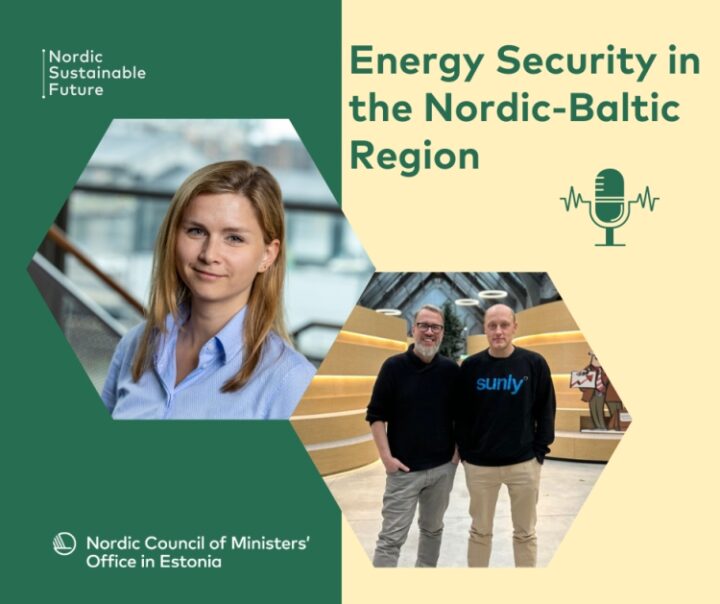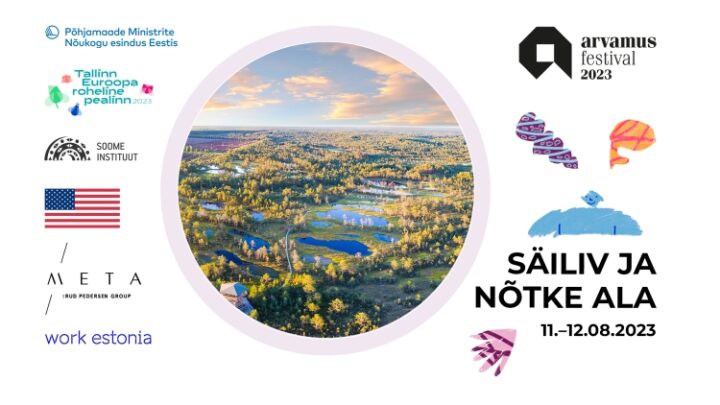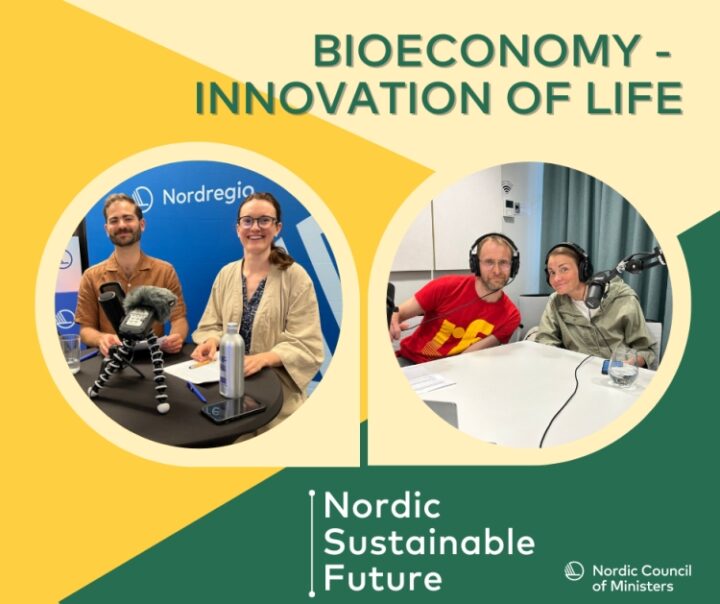The greatest challenge the Nordic countries face in the next few years: providing every person with stable and affordable electricity
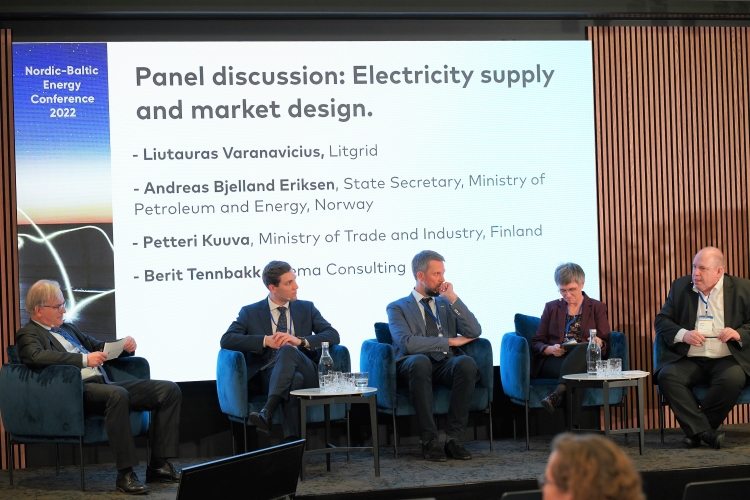
There needs to be enough electricity for everyone and it has to be both cheap and sustainable. That can only be achieved if countries work together and use their strengths to help compensate for the weaknesses of others, say Nordic experts. Estonians feel that international regulation could help in this regard, as this would give all parties an extra sense of security.
“The ongoing energy crisis has shown that we are too vulnerable, which is why we must pursue even greater cooperation in the field of energy,” states the joint declaration made at an energy-themed session of the Nordic Council of Ministers (NCM) held in Reykjavik. Klaus Skytte, the director of Nordic Energy Research, says the challenge we face is adapting our energy sector so that it contributes to more than just the green transition. “It has to contribute to energy security as well, and to ensuring that energy is available to everyone at a reasonable price,” he advises.
Skytte says that cooperation must preserve each country’s energy systems, but enable the countries to work together in a way that ensures all strengths are brought into play. Former Norwegian Minister of Climate and Environment Ola Elvestuen adds that one thing we must strive to achieve together is independence from Russian gas. “That’s something we need to be working with all of Europe to bring about,” he says. “There are a number of ways the Nordic countries can contribute to this, one of which is by utilising the broad range of energy resources we have available to us on our own lands and in our own waters, and which to date have provided companies and individuals with guaranteed access to stable and affordable electricity.”
Europe as a whole is prepared to work together to achieve this. Tanguy de Bienassis, an energy investment and finance analyst with the International Energy Agency, recalls the shared challenges and bottlenecks identified at last year’s Nordic-Baltic energy conference. “Not only are we are living through the first global energy crisis,” he says, “but we all want to reduce global warming and invest in clean energy. We have to reach a figure of two trillion dollars invested in green energy by 2030 while at the same time reorienting our energy trade due to the war in Ukraine.”
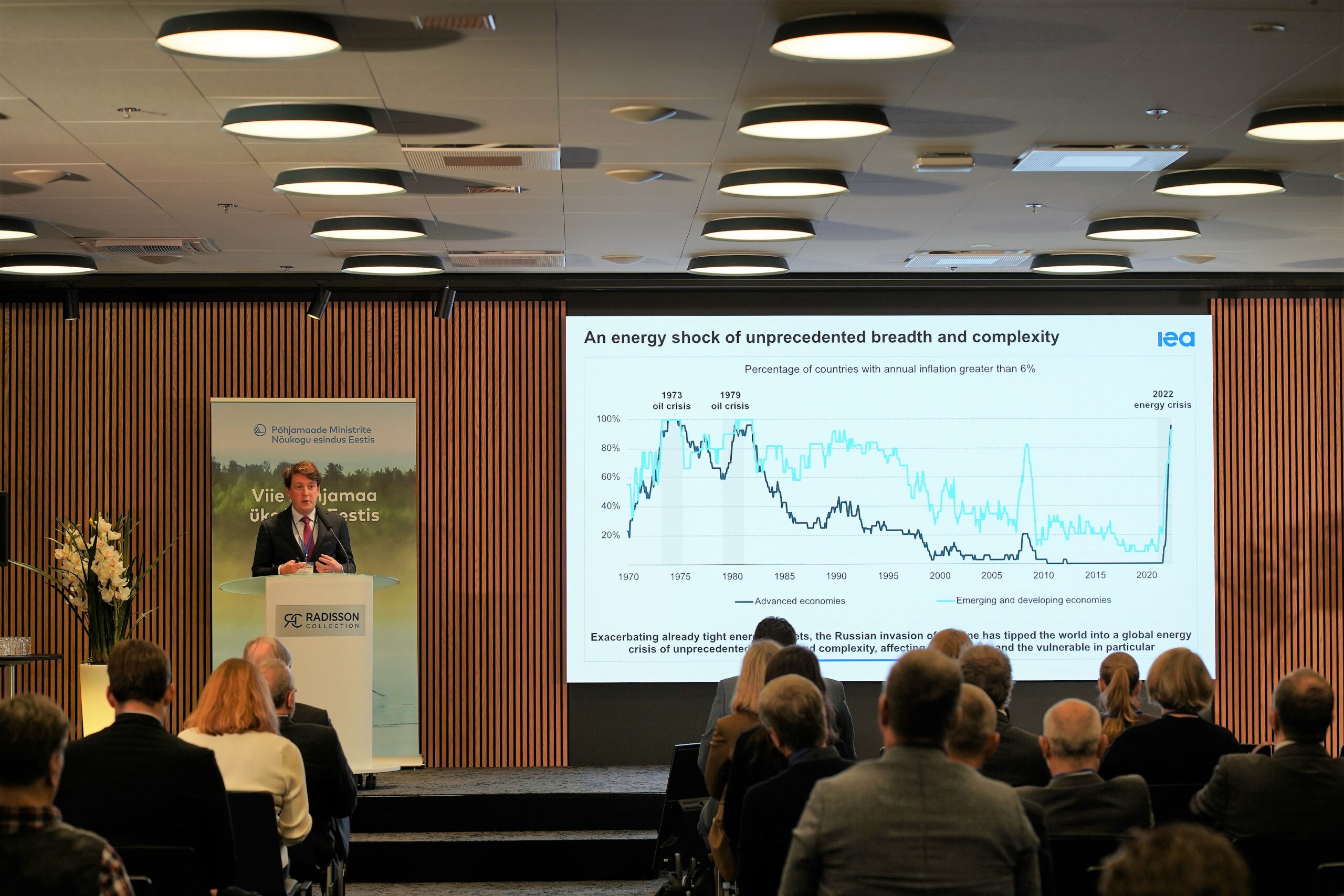
Tanguy de Bienassis on the Nordic-Baltic Energy Conference in 2022
Experts say the objective should be rapid results, whether they involve wind, hydropower, biofuels or some other source of energy.
Regulations must be put in place
One Estonian expert, Energiasalve director and shareholder Peep Siitam, feels that all the conditions for cooperation are there save for regulatory legislation. “The technology we have would allow us to work really well together, but rules have to be in place that everyone follows,” he says. “There needs to be international regulation if we’re to attract investments in new controllable, carbon-free capacities.”
Siitam also says that without regulations, cooperation could turn protectionist at some point, with every country ultimately defending their own interests rather than those of the free market. “Take the new electricity market initiative, the Net Zero Industry Act,” he adds. “How can we implement it effectively without ending up going for each other’s throats? It’s not something anyone’s talked about in any great detail yet. The way it is at the moment it’s more about protectionism on the part of the EU, and in its current form it will undermine the union’s competitiveness.”
Since technologies for the storage of electricity are also developing at pace, experts feel that they too require regulation. Siitam says there is no clear mechanism at present with which to stimulate storage or which will guarantee security of income. “Competitive storage devices don’t need financial backing, but long-term market regulation that will ensure they’re profitable,” he suggests. He is nevertheless optimistic about the future, adding that the European Commission is already moving in the right direction. “They want EU Member States to plan their own measures for capacities that ensure flexibility and to inform the commission of them,” he explains. “As such, Member States will be required to report their planned measures, and we’re moving towards everyone following the same regulation, not different ones where you can choose which one suits you best.”
The need is clear
Improved cooperation between countries in establishing new electricity production capacities would also help to prevent overinvestment. Countries today are battling it out to see who can be quickest to set up new wind and solar farms, all too often failing to take into consideration the very strong regional correlation between the strength of the prevailing wind and the existence of solar energy, which makes the exporting of massively overproduced energy rather unlikely and at the same time risks a shortage of energy during windless periods.
As such, the best solution would be for countries within a given region to plan, on the basis of a logical algorithm, sufficient renewable energy capacities in all countries so as to minimise the risk of both overproduction and deficits. Based on the wind energy investment plans currently known to exist, it is quite easy to show on the basis of models that in theory there is no need to establish new wind capacities in Estonia at all because of the massive developments in wind energy primarily taking place in Finland and Lithuania. In practice, such uneven development would make little sense, because a vital precondition for investment in the economy is the availability of local production capacities. For this reason, there is no viable alternative to e.g. the objective set for Estonia to be generating renewable energy in an amount equal to its annual consumption by 2030.
Regional work in the planning of new electricity production capacities which takes into account a balanced principle of cooperation and actual climate conditions would help to reduce not only the risk of overproduction but also the investments made in electricity networks, which would contribute to lower costs and the preservation of the extant living environment.
Moreover, regional cooperation between countries would help to solve the challenges posed by nuclear energy. Siitam says that if prices were to fall substantially, nuclear power could be a way of achieving a carbon-neutral economy. “That said, the construction of nuclear plants presupposes the indiscriminate and large-scale consumption of electricity that wasn’t being consumed before,” he adds. “By ‘indiscriminate’ I mean ‘being used all the time’. If that sort of consumption doesn’t materialise, there’ll be no place for nuclear power plants on the market.” Jaak Tuksam, an energy expert and the business development manager for Gren, posits that the current plans foresee consumption being built in to contracts. “Like advance sales,” he explains. “That means looking for partners to sell to in the future. And when you’re building a nuclear power station, it’s important that you have a critical mass of consumers if you want the thing to pay itself off.”
Nord Pool leads the way
An example of cooperation to date is Nord Pool: the world’s first international electricity exchange. It has come in for considerable criticism with power prices at their peak, but experts say this simply reflects the free market and its invisible hand. As such, it must be neither over-regulated nor taken apart.
Siitam explains that peak capacities are expensive because power stations dictate the price. “But this market, based on marginal costs, has actually functioned really well, just the way it was designed to,” he says. “It might not be stimulating new capacities, but that’s not an objective that was ever set for it.” Tuksam adds that the current market design is close to ideal. “It observes the logic of the invisible hand,” he says: “when there’s a shortage of capacity, the price goes up. But as the price rises, someone has a light-bulb moment and they realise it’s a good investment opportunity. And so new capacities are generated.” At the same time, the administrative risk inherent in amending market regulation is the greatest obstacle to the construction, solely on market conditions, of new, controllable production capacities that create flexibility in the electricity system.
Experts agree that slamming on the brakes and establishing ceilings when prices start to fluctuate is not necessarily a good idea. In Siitam’s view, the market needs a decade or so to settle in. “It’s only just finding its feet and we’re already putting obstacles in its path,” he cautions policy-makers. “Please, whatever you do, don’t flush existing market regulation down the pan! As more affordable capacities are generated, the invisible hand will push expensive capacities into the background.”
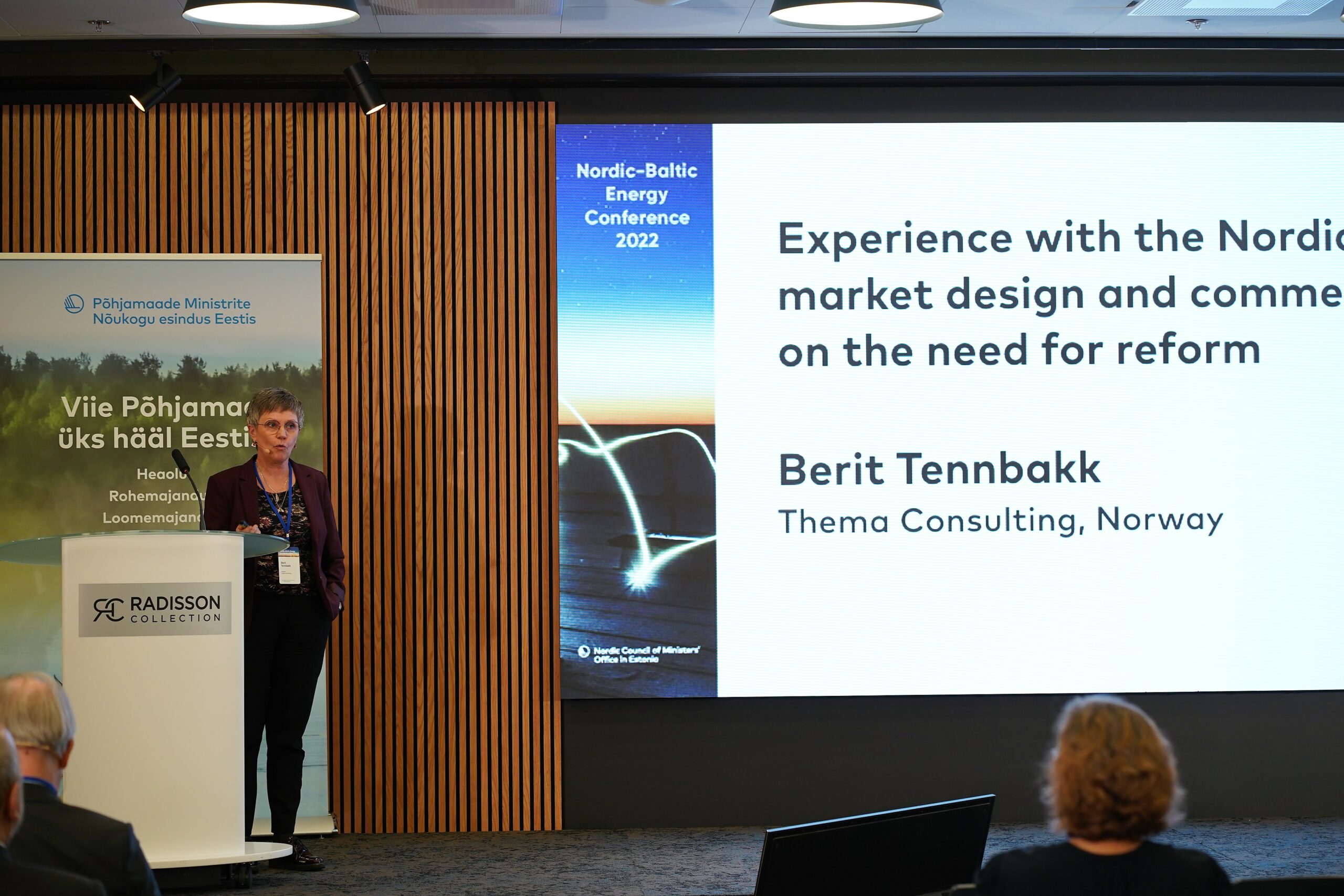
Berit Tennbakk
Berit Tennbakk from Thema Consulting says the Norwegian experience shows that the energy market has to be reformed in cooperation with both the public and private sectors. “The market can only work the way it’s meant to if there are agreed, long-term frameworks to operate in,” she counsels. “For example, regulations must provide flexibility and reduce investment-related risks. Energy investments are costly, so to attract money into the system, the system has to be flexible. It was out of respect for those principles that we implemented our energy reforms in 1991. We wanted to ensure continuity of supply at a lower price, utilising the principles of the market economy to do so.” More precisely, the Norwegians sought to make sure that the price of hydroelectricity better reflected the actual price of water, since 90% of their country’s supply is based on hydropower. They also had to be able to cope in situations where there was less water for one reason or another.
The annual Nordic-Baltic Energy Conference is organised by the Estonian office of the Nordic Council of Ministers. The theme of the 2022 conference was ‘Pressure on energy policy and accelerated change on the Nordic-Baltic energy market’, with discussions of price stability, energy security, continuity of supply and the achievement of climate goals.
The conference can be viewed online here.
